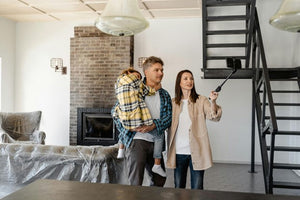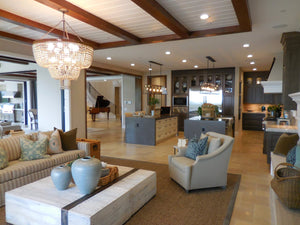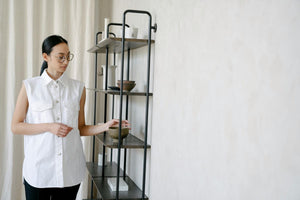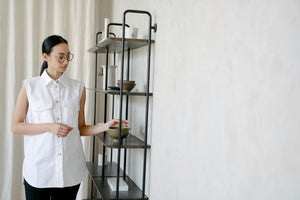Biggest Home Staging Mistakes You Need to Avoid

Biggest Home Staging Mistakes You Need to Avoid - Home staging – it's more than just an industry buzzword. It is one of the essential components to successfully selling a home in today's competitive real estate market. Often, it is what makes or breaks a potential buyer's decision. Essentially, home staging is the art of preparing and showcasing your property for sale, transforming it into a marketable product that appeals to the vastest range of prospective buyers. This process goes beyond simple cleaning or decorating. It strategically accentuates a home's strengths, minimizes shortcomings, and highlights its potential. However, a poorly staged home can deter potential buyers, making the selling process more challenging. That's why, in this text, we bring to your attention some of the most common home staging mistakes. We hope this knowledge will be your secret weapon, helping you to sidestep these pitfalls and ensure your property captures the attention and interest of potential buyers.
Ignoring the Importance of First Impressions
When selling your home, remember this: first impressions count. The moment a potential buyer lays eyes on your property, they form an initial judgment that can significantly impact their overall perception. That's why curb appeal and entryway play a crucial role in attracting buyers and setting the tone for the rest of their experience. All too often, sellers make the mistake of neglecting the exterior of their homes. Overgrown lawns, unkempt landscaping, or an uninviting entryway can instantly turn off prospective buyers. To ensure a positive first impression, take the time to enhance your curb appeal. Tidy up the yard, add fresh mulch or colorful plants, and make sure your entryway is well-maintained and visually appealing. Remember, a captivating exterior sets the stage for a successful sale.

Over-Personalizing the Space
While your unique taste is a reflection of your personality and lifestyle, it's crucial to remember that buyers need to envision themselves living in the space. Strike a balance between showcasing your style and creating a neutral environment that appeals to potential buyers. Too many personal items, such as family photos, collections, or specific decor choices, can distract buyers and make it difficult to visualize the property as their own.
That is why it's important to depersonalize your home before putting it on the market. Start by removing personal photos and sentimental items. Opt for a neutral color palette and decor style that allows buyers to imagine themselves living in the home. Creating a blank canvas enables potential buyers to envision their personal touches and make a connection with the property. Remember, the goal is to make your home feel inviting and welcoming to all who enter.
Neglecting to Declutter
Clutter is a foremost deterrent when it comes to selling your home. It creates a visually chaotic environment and hinders potential buyers from envisioning the space's full potential. When buyers see cluttered rooms, overcrowded bookshelves, or overflowing closets, it gives the impression that there is not enough storage or living space. Take full advantage of your storage unit - make use of the space available, remove excess furniture, personal items, and unnecessary clutter, and create an open, spacious atmosphere that resonates with customers. Renting storage units will allow you to temporarily store items that are not necessary for displaying your home. Use your storage unit to regularly organize and store these items, ensuring your home feels private and uncluttered during showings. Remember, a clutter-free space allows buyers to appreciate each room's true potential and functionality, making it easier to imagine themselves living in the space.

Home Staging Mistakes: Poor Lighting Choices
Lighting plays a crucial role in setting the ambiance and mood of a home. It can transform a space into a warm and inviting haven. Unfortunately, many sellers overlook or mishandle lighting, which can significantly impact a buyer's perception of the property.
One of the most common home staging mistakes is relying solely on overhead lighting. While it provides general illumination, it often creates harsh shadows and fails to highlight specific areas or features. To avoid this, consider incorporating a mix of lighting sources, including floor or table lamps, wall sconces, and task lighting, adding depth and creating a more visually appealing atmosphere, and making your home attractive.
Utilize natural light to its fullest potential. It brightens up spaces, making them feel open and inviting. Maximize the amount of natural light by keeping curtains or blinds open during showings, clearing any obstacles that may block windows, and strategically placing mirrors to reflect and amplify the light.

Leaving Rooms Empty or Purposeless
Every room in your home should have a clear purpose when staging it for sale. Buyers need a clear idea of how they can use the space to meet their specific needs and lifestyle. One common mistake is leaving rooms empty, making it challenging for buyers to understand the potential of the space. Another mistake is misusing rooms by furnishing them with inappropriate or mismatched furniture that doesn't align with the intended purpose. Whether it's a spare bedroom, a home office, or a cozy reading nook, ensure each room has a defined purpose. Stage it appropriately to maximize its appeal to potential buyers. By giving every room a clear function, you help buyers see the full potential of your home and imagine themselves living comfortably within its walls.
Trying to Hide Home Flaws
When selling your home, it's natural to want to present it in the best possible light. However, attempting to hide noticeable flaws can backfire and deter potential buyers. Address these flaws head-on rather than trying to cover them up. Buyers appreciate transparency and honesty, and trying to hide flaws may lead to a lack of trust and skepticism.
Common mistakes include concealing water stains with furniture or using strong air fresheners to mask odors. Instead, focus on addressing the root cause of the issues and making necessary repairs or improvements. This approach will help you sell your home faster and foster trust and confidence among buyers, increasing the likelihood of a successful sale.
Conclusion
By avoiding common home staging mistakes, such as neglecting curb appeal, over-personalizing the space, neglecting to declutter, making poor lighting choices, and trying to hide flaws, you can create a captivating and inviting environment that appeals to potential buyers. Take full advantage of these home staging tips and apply them to your property, ensuring a successful and rewarding selling experience. Set the stage for a quick and impressive sale by implementing these strategies and showcasing your home in its best light.- Home Staging Warehouse






